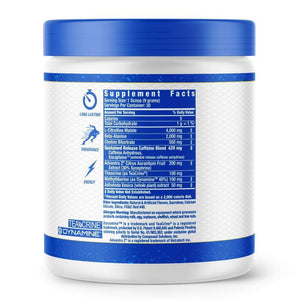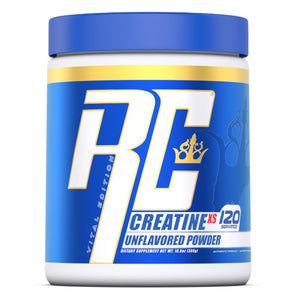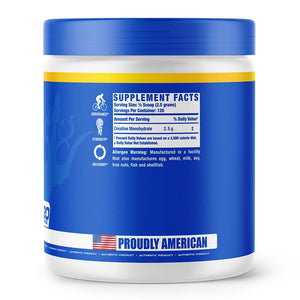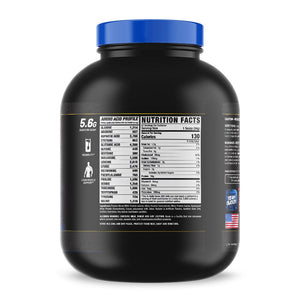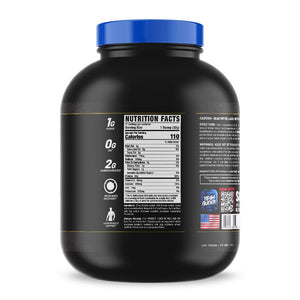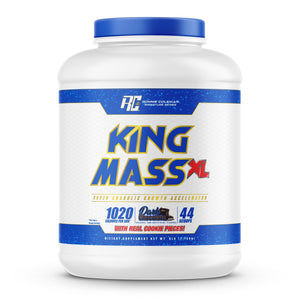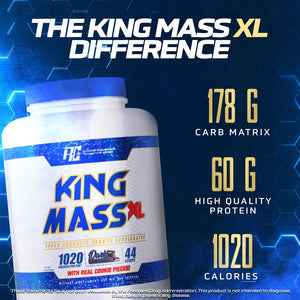The trouble with myths is that they, by definition, have the ring of truth about them. They sound feasible, but they are anything but -- and in many cases, they can be damaging. Unfortunately, weight lifting has more than its fair share of myths.
Exactly how these untruths gain so much traction within the weight lifting community isn't always apparent. Sometimes, myths spread via well-intentioned advice in the gym. The Internet is also a problem, as anyone can write a weight lifting blog post under the self-appointed guise of an expert.
While many weight training myths are harmless -- or simply time-wasting -- others can have a negative effect on the health of people who believe them. Perhaps the biggest myth of all is that lifting weights regularly guarantees bulk and size. This particular misconception is so common, it deserves to be broken down in isolation.
Weight Lifting Doesn't Guarantee Bulk
If you're aiming to compete in professional bodybuilding events, simply lifting weights regularly and taking a whey protein supplement just won't get you where you need to be -- at least not in isolation.
Yes, regular workouts are part of the process, but there's so much more involved. But because we see pumped men and women on the cover of weight lifting magazines, many of us believe that hitting the free weights section of the gym four times a week is the key to looking like Mr. Olympia.
In reality, building muscle mass and definition is a complex process that requires dedication and a degree of personal sacrifice.
When you lift weights that challenge your limits, a series of micro-tears develop within your muscle fibers. The body's automatic response is to immediately begin repairing them by increasing the number of cells in the affected areas -- and by adding new ones. As this process continues over an extended period of time, muscle mass increases. However, the rate and extent of the process is dependent on a number of variables, including:
- Protein / calorie consumption
- Workout frequency
- Time spent on each muscle group
- Rest between sets
- Rest between workouts
- Lifestyle
- Quality and quantity of sleep
- Quality of diet
- Genetics
In other words, building muscle mass and "bulking up" requires an holistic approach to health and fitness, along with a structured, science-based approach to working out. Genetics also plays a role. Some people will simply find building muscle mass easier than others. (Sorry ectomorphs)
The Advantages of Weight Lifting
Of course, weight lifting isn't just about bulking up and trying to achieve a bodybuilder's physique. In fact, most regular weight lifters do so as part of a balanced exercise regime that involves cardiovascular training as well. The real benefits of lifting weights regularly aren't cosmetic -- they're health-based and can be a great form of stress relief.
Implementing tried-and-tested weight lifting exercises into your workout regime can help you to do the following:
- Reduce body fat
- Burn calories faster during cardio workouts
- Increase body strength
- Reduce risk of osteoporosis
- Improve posture
- Reduce muscle and joint pain
- Reduce stress
- Alleviate depression
Common Weight Lifting Myths to Avoid
So, you've prepared yourself for what lies ahead. You know that weight lifting alone won't make you look like Mr or Ms Olympia, and you're ready to put in the hard work needed to reap the rewards. By ignoring the following seven myths, your chances of achieving the results you're looking for should increase dramatically.
1. Muscles Turn to Fat When You Stop Lifting
There is nothing in science that supports the myth that muscle can ever be turned into fat -- whatever the circumstances. These are two completely separate issues, and they need to be treated as such from the outset.
If you stop lifting weights suddenly, the muscles you've tightened and strengthened will eventually begin to weaken. If your hiatus continues, your muscles will lose their size, and the effects will be noticeable in your physique. Yes, you may not look as good as you did when you were lifting regularly, but you won't magically develop more fat -- unless you suddenly begin consuming more calories than you burn. The good old calories in vs. calories out equation.
Muscle never turns into fat -- it's impossible. However, there is a link between muscle mass and the efficacy of cardio exercise. The more muscle you have, the more calories you burn when you're running, swimming, walking and cycling.
There is evidence to suggest that your body burns fat at a faster rate for up to 24 hours after a weight lifting session. Your body needs to work harder in order to power your higher-than-average muscle mass, so more calories are burned.
2. It's Best to Concentrate on One Muscle Group a Day
Have you ever heard someone in the gym talk about "leg day?" Maybe you have regular "leg days" yourself. There's a commonly held belief that concentrating on just one muscle group in a weight lifting session is the best route to a strong, developed physique. Unless you're a professional bodybuilder preparing for competition season, this just isn't the case.
Most personal trainers will tell the average person that high-intensity interval and circuit training is the best way to approach weight lifting. (keyword - average) These methods involve several different lifting techniques that target most or all of the main muscle groups in a single workout. Muscle is built gradually over time, aerobic capacity is increased, calories are burned at a consistent rate, and recovery time is reduced.
If your goal is extreme physique change you may want to consider other weight training regimens that focus more intensely on each individual muscle group once or even multiple times per week. One of my personal favorite methods is called PRRS training, which stands for Power, Rep Range and Shock. There are many training methods and there is no one size fits all answer. Your current condition, goals, age and lifestyle are all things to consider when picking a training regimen.
Top tips: Rest or recovery days are needed and even the most elite athletes take them and try using a post-workout supplement if your body needs a helping hand. If you want to make the most of your gym time and efficiency is a top priority for you, perform compound exercises that work several muscle groups at once such as deadlifts, squats, cleans etc.
3. Weight Lifting Is Bad for the Joints
One of the more damaging myths out there right now is the one that tells people that lifting weights is bad for the joints. This particular lie is stopping people from even attempting strength and conditioning exercises, which is actually making many joint problems worse.
Research published in the Journal of Rheumatology revealed that people with knee-joint pain experienced a 43 percent reduction in their pain after performing weight-bearing exercises for just four months. Moreover, the subjects revealed that performing simple, everyday tasks at work or in the home became a lot easier.
A lot of joint pain is the result of weak supporting structures. By weight training regularly -- and in the right way -- you can protect weak joints with strengthened muscle. Your knees, shoulders, hips and ankles will also be able to absorb shocks.
Note: If you want to engage in extreme forms of weight lifting and push the limits of your strength then you may run into some joint issues down the road. Expecting anything else would be like a boxer not expecting to have any cuts or a busted nose.
4. You Have to Lift Increasingly Heavier Weights for the Best Results
One of the most common causes of gym-based injuries is over-exertion in the weights section. This happens because there is a myth going around that people need to be lifting increasingly heavier weights as their body becomes stronger.
Of course, the weights you lift should be challenging your body, otherwise the benefits won't be fully achieved. However, some people attempt to lift more than their body can cope with. When inevitable failure occurs, many of those people become disheartened with the entire enterprise -- and they give up.
Now, this is a complex issue. For example, you can build muscle and develop a great physique with relatively light weights. To do so, however, requires regular sessions and lots of reps. However, if you're competing in certain sports -- including football and power lifting -- you have to either increase or maintain strength. In this case, there will be a period during which weight increases are necessary.
For most people, performing an increasing number of reps and lifting until the muscles can do no more, AKA going to failure, will deliver long-term muscle gains.
5. You Burn Fewer Calories Lifting Weights Than Through Cardio Exercise
If you were to measure the calories burned during a 30-minute run and compare them to the number burned during a 30-minute weight training session, the run would probably come out on top. But this only tells half the story.
When you lift weights for a period of time, you obviously burn calories there and then. But you also benefit from something called "excess post-exercise oxygen consumption." EPOC is a process that involves an increased rate of oxygen consumption during the recovery period. Weight lifting creates an EPOC rate far in excess of that created by cardio exercise.
Why does this matter? Well, consuming and processing additional oxygen requires energy -- in the form of calories. A 30-minute run might lead to an increased EPOC rate for a few hours afterwards. But lift weights for 30 minutes, and the rate (along with calorie burn) remains elevated for up to 48 hours. Combine an intense workout featuring weight training with a proven fat burning supplement, and you should see a dramatic increase in the rate at which your body burns fat. (Don't forget about your diet here...kind of important as well)
6. Regular Weight Lifting Reduces Your Flexibility
Denser muscle obviously means less flexibility, right? Well, in most cases, the opposite is true. Just take a look at a professional gymnast for proof. While bulking up like a bodybuilder affects flexibility, weight training to improve strength and conditioning does not.
When executed perfectly, weight lifting techniques combine strength-building with mobility. Motion is at the very heart of lifting weights, so it's only natural that it would improve flexibility and mobility over time. Think of the Olympic gymnast I just mentioned. The strength required to execute many of the moves is enormous, yet an enormous amount of flexibility is required at the same time.
You shouldn't be making the choice between cardio and weight training, as both are integral to an effective workout regime as well as your health. Avoid the common weight lifting myths listed here, and achieving your health and fitness goals should become a lot easier.



